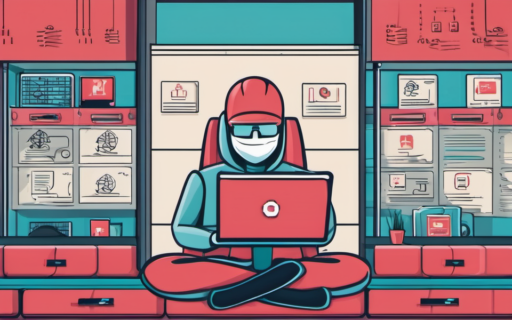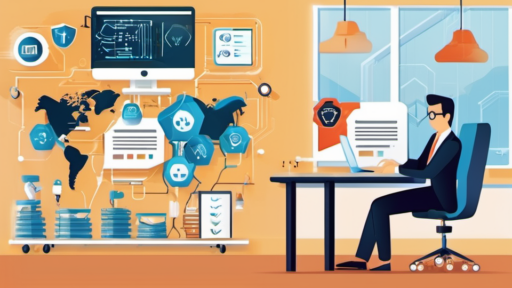Ransomware. It’s a nightmare that keeps every business owner awake at night. Imagine this: your company’s data is locked, inaccessible, and the only way to get it back is to pay a hefty ransom. This isn’t just a movie plot; it’s a horrifying reality for countless businesses, organizations, and individuals worldwide. But hold on, the tides are turning. Thanks to groundbreaking technical insights and innovative solutions, we’re gaining the upper hand against this relentless cyber threat.
Understanding the Ransomware Threat Landscape
Let’s first face the reality of the ransomware threat landscape. The past few years have witnessed an alarming surge in these attacks. The Ransomware-as-a-Service (RaaS) model, where malicious actors provide ransomware kits for others to use, has further fueled the problem. Cryptocurrency, with its inherent anonymity, has become the preferred payment method, making it incredibly difficult to track down the culprits.
Identifying Common Attack Vectors
Understanding how ransomware attacks take place is crucial for defending against them. These attacks often exploit vulnerabilities in software and operating systems, such as outdated software, weak passwords, and misconfigured firewalls. Phishing emails, malicious attachments, and infected websites are just some of the popular techniques used by attackers. They can even target vulnerabilities in your network infrastructure, compromising your systems from within.
The Devastating Impact of Ransomware Attacks
Ransomware attacks have far-reaching consequences. Beyond the financial costs of the ransom itself, businesses face several additional challenges:
- Data Loss and Damage: The threat of losing crucial data is always a real concern, potentially hindering operations and impacting the organization’s reputation.
- System Downtime and Service Disruptions: Accessing crucial information and data can be interrupted for days, even weeks.
- Compliance Penalties and Regulatory Investigations: Data breaches often lead to significant fines and legal repercussions.
- Lost Business and Reputation Damage: A ransomware attack can erode customer trust and cause significant financial loss due to disruptions and downtime.
Empowering Defenses with Technical Insights: Turning the Tide on Ransomware
Fortunately, the rise of innovative solutions is combating the ransomware threat. Here’s how:
1. Strengthening Security with Advanced Threat Detection and Prevention Tools
The traditional approach to cybersecurity is being disrupted by cutting-edge threat detection and prevention tools. These sophisticated solutions provide real-time protection against a wide range of threats, including ransomware.
Endpoint Detection and Response (EDR): A Multi-Layered Shield
EDR solutions offer robust endpoint security that goes beyond traditional antivirus software. These tools constantly monitor systems for suspicious activity, detecting potential ransomware attacks before they can inflict significant damage.
- Behavior Monitoring and Threat Intelligence: EDR tools use behavioral analysis to detect anomalies that might signal a ransomware attack, leveraging threat intelligence feeds for proactive identification.
- Automatic Response and Mitigation: When potential threats are detected, EDR systems can automatically trigger responses, isolating affected systems and containing the damage.
Threat Intelligence: Knowing Your Enemy
Staying one step ahead of ransomware attackers is essential, and threat intelligence plays a crucial role. By gathering and analyzing data on the latest ransomware campaigns, their tactics, and targeted industries, security teams can proactively enhance defenses.
2. Adopting Data Backup and Recovery Strategies
No matter how sophisticated your security measures, data backup remains essential in case of a ransomware attack. Implementing robust data backup and recovery strategies significantly mitigates the potential damage and enables a quick recovery.
Off-Site Data Storage: A Fortress Beyond Reach
Storing backup data in secure, off-site locations is a cornerstone of any comprehensive recovery plan. Cloud-based backups, for instance, provide accessibility from anywhere while ensuring data redundancy and protection from potential disasters at your physical location.
Data Recovery and Business Continuity: Returning to Full Strength
The process of data recovery and restoring business operations after a ransomware attack can be intricate and time-consuming. Having well-defined business continuity plans can be invaluable. These plans guide organizations through the recovery process, minimizing disruption and allowing a swift return to full operational capability.
3. Leveraging Artificial Intelligence and Machine Learning to Outsmart the Attackers
The power of Artificial Intelligence (AI) and Machine Learning (ML) is transforming cybersecurity by allowing systems to learn and adapt to evolving threats.
AI-Driven Threat Detection: Learning from Past Attacks
AI and ML algorithms can identify patterns and anomalies in system activity, flagging suspicious behaviors that might signal a ransomware attack. By continually learning from past events and threat intelligence feeds, these systems can enhance their effectiveness in detecting emerging threats.
Automated Incident Response: Streamlining Defenses
AI-powered systems can automate response procedures for identified threats, enhancing efficiency and effectiveness in minimizing the impact of attacks. From isolating infected systems to blocking malicious connections, AI-driven automated responses help contain the damage and recover quickly.
4. Emphasizing Cybersecurity Education and Training
The human factor remains a crucial aspect of ransomware defense. Regularly educating employees about cybersecurity threats, particularly ransomware, is crucial for protecting your organization.
Promoting Secure Password Practices: A Foundation of Security
Employees often fall victim to phishing attacks by opening emails with malicious links or attachments. Strong passwords, two-factor authentication (2FA), and awareness about the dangers of suspicious emails significantly enhance your security posture.
Promoting Best Practices: Building a Culture of Cybersecurity
Investing in comprehensive cybersecurity training programs helps instill a culture of security awareness within the organization. Regular training and simulations equip employees to recognize suspicious activities, adopt safe browsing practices, and respond appropriately to potential security threats.
Key Takeaways
The threat of ransomware is a reality for every organization. Staying informed, implementing strong security measures, and adapting to the latest technologies are key to protecting your data and your business.
- Adopt a proactive approach towards cybersecurity by regularly reviewing and updating security practices.
- Invest in advanced threat detection and prevention technologies, such as EDR, and leverage the power of AI and ML.
- Implement robust data backup and recovery strategies, ensuring data security and speedy recovery in the event of a successful attack.
- Invest in employee training programs that educate and empower them to recognize and mitigate potential cyber threats.
Don’t underestimate the power of technical insights. By embracing these innovative approaches and empowering your organization to stay ahead of the curve, you can ensure a brighter, more secure future for your business. Remember, the fight against ransomware is an ongoing battle, but with the right strategies and the right tools, you can be a force to be reckoned with.






